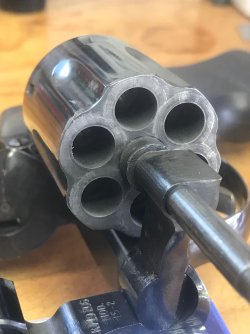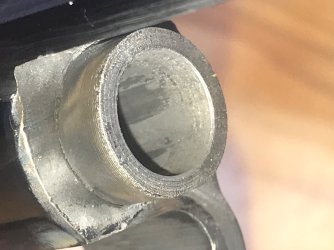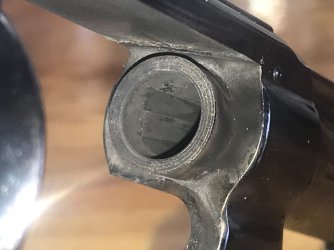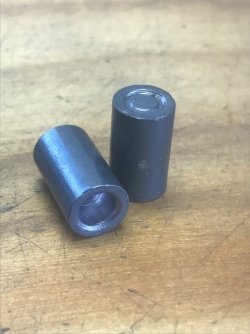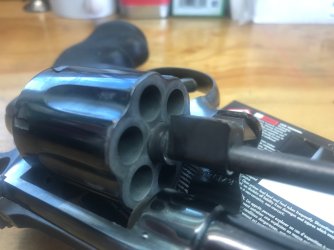I'm not sure what is going on here. This appears to be lead on the outside of my M15-2 cylinder. This is 200 rounds of Bearcreek 148 gr coated hbwc over 2.8 gr of bullseye. Looking down the barrel there is no sign of any lead, there wasn't any drop off in accuracy or any issues. The barrel/cylinder gap on this pistol is a tight .008 clean. The same day I put 100 rounds of 158 gr lrn through my M14-4 same bullet manufacture and powder with no build up on cylinder. Is this a wad cutter or their coating issue? Any ideas?
Tom
Tom


